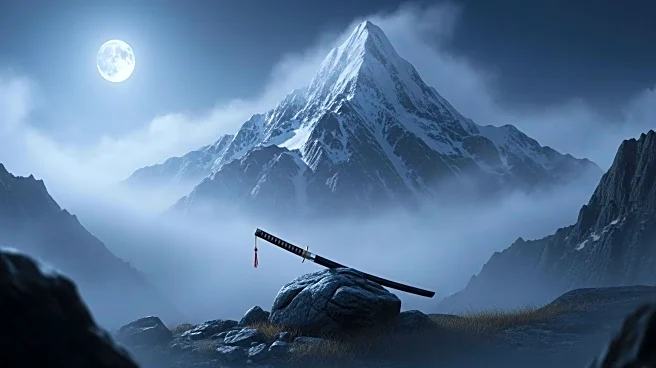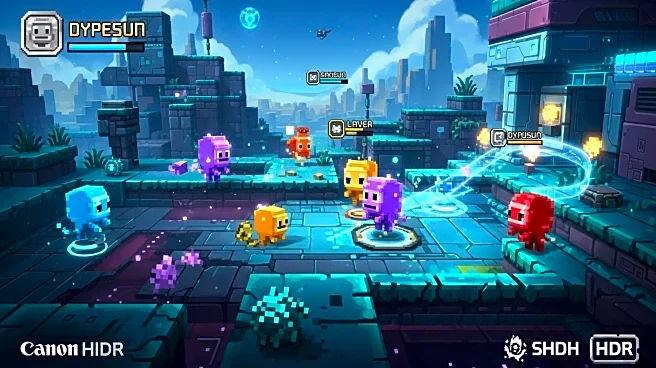What's Happening?
Ghost of Yotei, the sequel to the popular Ghost of Tsushima, has been released, offering players a fresh experience with new cinematic modes and gameplay features. Set 400 years after the original game, Ghost of Yotei introduces a new protagonist, Atsu, and a different region of Japan. Players can explore the game in various cinematic modes, including the Kurosawa mode, which mimics classic Japanese films with black and white visuals and enhanced sound effects. Additionally, two new modes, Miike and Watanabe, offer unique gameplay experiences. Miike mode intensifies combat with increased blood and mud effects, while Watanabe mode changes the music to a lo-fi beat. The game also introduces new mechanics, such as the ability to throw fallen weapons at enemies, enhancing combat strategy.
Why It's Important?
The release of Ghost of Yotei is significant for the gaming industry as it continues the legacy of Ghost of Tsushima, a game that was praised for its storytelling and immersive world. By introducing new cinematic modes, the game appeals to fans of Japanese cinema and offers a unique visual experience. The new gameplay features, such as weapon throwing, add depth to combat strategies, potentially attracting a broader audience. This release could influence future game designs, encouraging developers to incorporate cinematic elements and innovative mechanics to enhance player engagement.
What's Next?
As players delve into Ghost of Yotei, feedback on the new modes and gameplay features will likely influence future updates or expansions. The gaming community's reception of the cinematic modes could lead to similar features in other games, promoting a trend of integrating film-like experiences in gaming. Developers may also explore additional content or sequels based on player interest and engagement with the new mechanics.
Beyond the Headlines
Ghost of Yotei's cinematic modes highlight the intersection of gaming and film, showcasing how storytelling techniques from cinema can enhance interactive experiences. This trend may encourage collaborations between game developers and filmmakers, leading to innovative projects that blend visual storytelling with gameplay. The game's focus on Japanese culture and history also contributes to cultural appreciation and understanding, potentially inspiring players to explore more about Japan's rich heritage.










